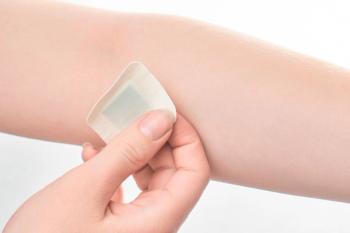
- Psychiatric Times Vol 25 No 8
- Volume 25
- Issue 8
Personality Disorder: “Untreatable” Myth Is Challenged
Success with new approaches to the psychotherapeutic treatment of borderline personality disorder (BPD) and other DSM-IV personality disorders has been reported in several studies recently, raising hopes that an intractable set of illnesses may not be as hopeless as once thought.
Success with new approaches to the psychotherapeutic treatment of borderline personality disorder (BPD) and other DSM-IV personality disorders has been reported in several studies recently, raising hopes that an intractable set of illnesses may not be as hopeless as once thought.
“Too many therapists still feel that borderline personality disorder is untreatable and is a lifelong drain on the energy of the therapist, the psychopharmacologist, and the entire mental health system," wrote Kenneth R. Silk, MD, in an editorial in the April 2008 issue of the American Journal of Psychiatry.1 In light of recent studies, he added, “the idea that these patients never change or improve needs revision.”
“There are a number of new treatments for borderline personality disorder. It’s clear that some of those can be helpful,” said Robert J. Gregory, MD. “It used to be that once borderline personality disorder was diagnosed, the patient was expected never to recover. Recent well-controlled studies are not bearing that out. We now see it as one of the better disorders to get. People actually do recover from it. It's a sea change in our thinking, which is gradually permeating to the mental health community.”
Silk’s editorial accompanied a study of Systems Training for Emotional Predictability and Problem Solving (STEPPS).2 A team from the University of Iowa department of psychiatry headed by Nancee Blum, MSW, found that “subjects assigned to STEPPS plus treatment as usual experienced greater improvement in the Zanarini Rating Scale for Borderline Personality Disorder total score and subscales assessing affective, cognitive, interpersonal, and impulsive domains, as well as improvements in impulsivity, negative affectivity, mood, and global functioning. These differences yielded moderate to large effect sizes. There was no difference between groups for suicide attempts, self-harm acts, or hospitalizations.” Significantly, “fewer STEPPS plus treatment as usual subjects had emergency department visits during treatment and follow-up.”
In his editorial, Silk, a professor of psychiatry in the University of Michigan Health System, wrote that “what is intriguing about the study by Blum and coworkers is that this nonpharmacologic intervention . . . is essentially an augmentation of or adjunct to treatment that is already occurring for the borderline personality disorder patient. It combines 20 weekly sessions of cognitive behavior and skills training elements with a systems approach that involves family members, significant others, and health care professionals with whom the patient interacts regularly.”
He added, “it would appear sensible to use STEPPS as an adjunct, particularly to an intervention in which effectiveness is limited in areas where STEPPS has shown to have beneficial impact. Perhaps as we study the impact of specific . . . psychotherapeutic interventions, we may be able to combine or sequence various interventions to get a greater degree of the effectiveness of psychotherapy.”
A different approach to treatment of personality disorder is found in a study in The Journal of Nervous and Mental Disease.3 Lead author Allan Abbass and his colleagues examined the efficacy of intensive short-term dynamic psychotherapy (ISTDP). “The emphasis of ISTDP is to rapidly help the patient experience unconscious emotions that are leading to unconscious anxiety, symptom disturbances, and various defenses,” the authors wrote. The main technical interventions are to encourage the awareness and experience of feelings while clarifying and challenging defenses in collaboration with the patient.”
In the study, “those treated with ISTDP had an average of 27.7 . . . treatment sessions and, during this time, mean ratings moved into the normal range for both [brief symptom inventory] and [inventory of interpersonal problems]. . . . They significantly outperformed controls on each measure.”
“The ISTDP treatment group made functional gains whereas controls did not. Work hours more than doubled in the ISTDP group and all were employed by the end of therapy. In
the control condition, 1 worker became unemployed. ISTDP-treated participants stopped 69% of all medications.”
Control patients, who had monthly meetings with the site coordinator that were designed as supportive psychiatric follow-ups, experienced “small but significant patient- and clinician-rated symptom reduction,” the authors noted. “These sessions were designed to mimic standard psychiatric care, which should offer some benefit to patients often referred in crisis,” they said.
In phase 2 of the study, the control group was given ISTDP. “Once the control group was provided ISTDP, they made similar gains” to those experienced by the primary subjects, the authors wrote.
“ISTDP” is difficult to implement because the challenge has to be done at exactly the right timing so the patient doesn’t feel attacked by the therapist,” Gregory told Psychiatric Times. “Some patients can benefit from it very dramatically. The patients in this study made marked gains in social and occupational functioning. All the patients were working full-time at the 2-year follow-up.
The patients in the study “only had about 26 sessions, which is not a very long time for personality disorders,” Gregory noted. It is very impressive, he said, that such good results were obtained after short-term psychotherapy. “I would look at this as a preliminary study with very promising potential,” he added.
Gregory, associate professor of psychiatry and behavioral sciences at SUNY Upstate Medical University, Syracuse, NY, is the lead author of a recent controlled study of psychodynamic psychotherapy for combined BPD and alcohol abuse that was published in the journal Psychotherapy: Theory, Research, Practice, Training.4
Gregory and his team developed a manual-based protocol for a psychodynamic treatment they called dynamic deconstructive psychotherapy (DDP), which “was developed for particularly challenging cases of BPD, such as those with co-occurring substance use disorders or antisocial personality disorder. . . . DDP aims to activate specific neurocognitive func- tions that are impaired. A major focus is to foster verbalization of affects and elaboration of recent interpersonal experiences into simple narratives so that patients can begin to link their affective experiences to their verbal/ symbolic attribution capacities.
Thirty patients were involved in the study, randomized equally between DDP and community-based treatment programs (treatment as usual, or TAU). They were evaluated for 3 primary outcome measures-parasuicide, alcohol misuse, and institutional care. At 12 months, the proportion of DDP participants reporting parasuicide behavior declined from 73% to 30%; those with alcohol misuse declined from 67% to 30%; and those in institutional care declined from 67% to 10%. During that period, the patients receiving TAU who reported parasuicide behavior declined from 47% to 33%; those with alcohol misuse declined from 67% to 44%; and those in institutional care declined from 67% to 22%.
“DDP may be a particularly cost-effective treatment alternative,” the authors wrote. “In addition to producing clinically meaningful benefits, it was less time-intensive than community care and . . . other manual-based treatments of BPD, it contributed to a marked decrease in institutional care over time, and it was associated with decreased prescriptions for psychotropic medications.”
They concluded, “the results of this study support the need for further research on DDP, including long-term outcomes, mechanisms of action, and efficacy in comparison to other manual-based treatments.”
As Silk wrote in his editorial, “The greater the number of available effective interventions, the better the chance that a patient may be able to improve to a degree where [he or] she feels that life is once again, if it ever was, worth living. Then we will have more evidence to erase the myth that borderline personality disorder is untreatable and that the diagnosis relegates the patient to a life of helplessness and hopelessness.”
References:
References
1. Silk KR. Augmenting psychotherapy for borderline personality disorder: the STEPPS program. Am J Psychiatry. 2008;165:413-415.
2. Blum N, St John D, Pfohl B, et al. Systems Training for Emotional Predictability and Problem Solving (STEPPS) for outpatients with borderline personality disorder: a randomized controlled trial and 1-year follow-up. Am J Psychiatry. 2008;165:468-478.
3. Abbass A, Sheldon A, Gyra J, Kalpin A. Intensive short-term dynamic psychotherapy for DSM-IV personality disorders: a randomized controlled trial. J Nerv Ment Di2008;196:211-216.
4. Gregory RJ, Chlebowski S, Kang D, et al. A controlled trial of psychodynamic psychotherapy for co-occurring borderline personality disorder and alcohol use disorder. Psychother Theory Res Pract Training. 2008; 45:28-41.
Articles in this issue
over 17 years ago
Agitation in Older Adultsover 17 years ago
Current Knowledge and Future Directionover 17 years ago
Understanding the Differences Between Impulsivity and Compulsivityover 17 years ago
Demystifying Love: Plain Talk for the Mental Health Professionalover 17 years ago
Artist’s Studioover 17 years ago
Update on Treatment of Low Back Pain: Part 2over 17 years ago
Geriatric Mood Disordersover 17 years ago
Of Stress and Alcoholism, Of Mice and Menover 17 years ago
Risk of Substance Abuse Not Increased by ADHD DrugsNewsletter
Receive trusted psychiatric news, expert analysis, and clinical insights — subscribe today to support your practice and your patients.













